Class 7 Notes Physical Education Unit 1 Foundational Basis of Physical Education and Well-being Free PDF
| Table of contents |

|
| Introduction |

|
| The Ball Progression Game |

|
| Ghorpadiche Shepoot |

|
| Nalugu Rallu Ata |

|
| Gidhada Gudkavan |

|
| Stand Up, Speak Out (Bullying Role-Play) |

|
| Harassment Prevention Skit |

|
| Summary |

|
Introduction
This chapter highlights how physical activities help in the overall development of students. It focuses on:
Improving fitness and strength
Building courage, motivation, and discipline
Learning to work as a team
Understanding the importance of safety and respect
Recognizing and dealing with bullying and harassment
Students also learn how to become mentally stronger and emotionally aware while playing games and performing physical tasks.
The Ball Progression Game
The Ball Progression Game is a fun and engaging activity that helps in improving coordination, teamwork, and ball-handling abilities. It challenges us to work together as we progress along a series of markers while passing the ball back and forth.
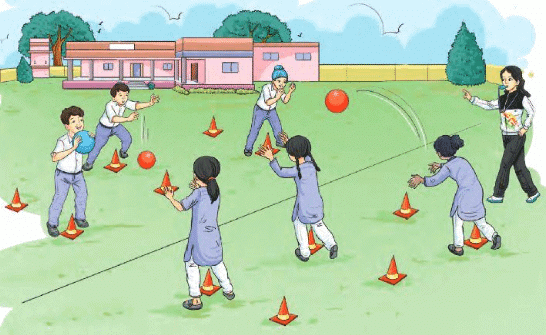
How to Play:
Draw a large rectangle on the ground with markers at intervals.
Students are divided into pairs and take turns to play.
Each pair passes a ball back and forth.
After a successful pass, both students move to the next marker.
Once they reach the final marker, the ball is passed to the next pair.
What Students Learn:
Timing and rhythm in movement
Trusting a partner
Tracking progress with every movement
Focusing on technique
Takeaway:
This game builds physical control and team coordination through step-by-step challenges.
Ghorpadiche Shepoot
Ghorpadiche Shepoot is a thrilling and enjoyable approach to improve cooperation and physical capabilities. Get ready to run with the ghorpad (also known as goh or goyra) and enjoy the excitement of the chase!
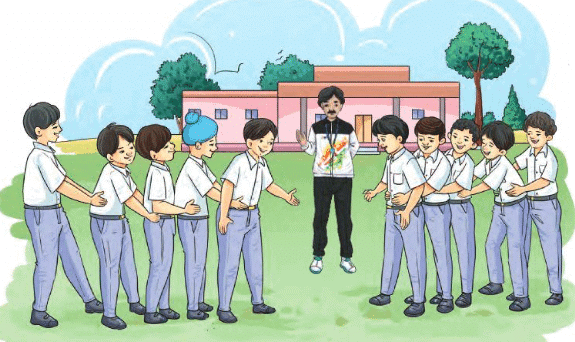
How to Play:
Students form teams of 5–8 and line up holding each other's waists like a ‘ghorpad’ (monitor lizard).
The front student is the ‘head’ and the last is the ‘tail’.
Teams move together to touch the tail of other teams while protecting their own.
Points are scored when a head touches another team’s tail.
Communication and synchronized movement are key to success.
What Students Learn:
Moving together as a unit
Importance of communication in a group
Staying focused while playing
Quick thinking and teamwork
Takeaway:
This activity teaches how coordinated movement leads to better group performance.
Nalugu Rallu Ata
Nalugu Rallu Ata is a traditional Indian game, popular in the southern regions, especially in Andhra Pradesh and Telangana. The name means ‘Four Stones Game’.
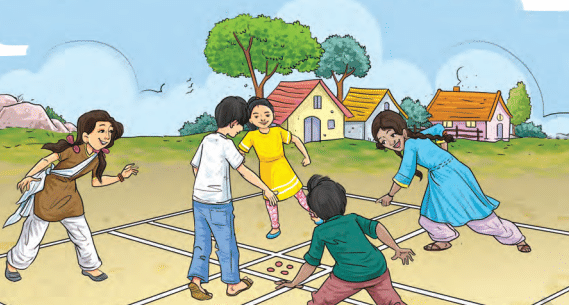
How to Play:
Draw a court with four boxes and a path.
Place four stones in the center; one student acts as the denner.
Four students each stand in one box and try to collect one stone without getting caught.
Once all stones are collected, the denner chooses:
"Gumpu": students gather in one box.
"Chuttu": students run 3 rounds around the boxes.
If a student is touched by the denner, they are out.
What Students Learn:
How to manage fear and nervousness
Working together or independently
Staying alert and making smart choices
Takeaway:
This game helps build mental strength and quick decision-making in pressure situations.
Gidhada Gudkavan
Gidhada Gudkavan is a traditional Indian game that replicates a chase between a hawk (gidhada) and chickens (gudkavan). The game, popular in rural areas, encourages agility, teamwork, and strategy as the hawk tries to tag the chickens, while the mother hen leads the chickens to safety.
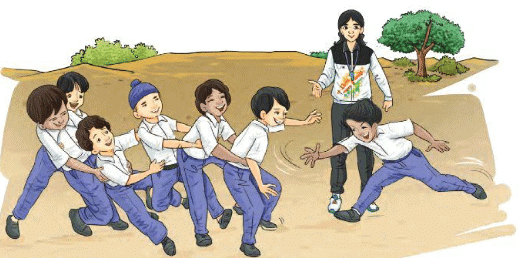
How to Play:
One student plays the hawk (gidhada); the others are chickens (gudkavan).
Chickens line up behind a leader, the ‘mother hen’.
The hawk tries to tag the last chicken in line.
The mother hen shields the chickens and moves them safely.
What Students Learn:
Leadership and protection
Staying focused while moving
Role of strategy in teamwork
Gender-sensitive participation and equality
Takeaway:
This game promotes group unity, quick reflexes, and the importance of leadership.
Stand Up, Speak Out (Bullying Role-Play)
Stand Up, Speak Out or Bully Role Play is an effective activity for learning about the effects of bullying, identifying its various forms, and practicing suitable reactions.
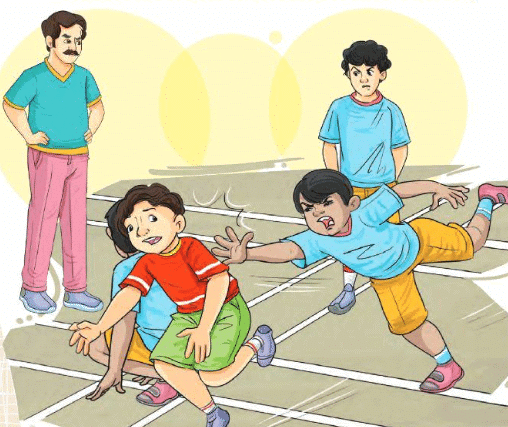
How to Play:
- Students are divided into teams and play a game like kho-kho.
Secret roles are assigned:
Bully: Teases or bothers others
Target: Victim who appears to be hurt
Bystanders: Watch silently or support the bully
Up-stander: Takes action to stop bullying
After the game, the actions and feelings are discussed.
What Students Learn:
Identifying different types of bullying
Understanding how victims and bystanders feel
How to stand up and support others
Takeaway:
The activity encourages students to treat everyone with kindness and courageously stop bullying.
Harassment Prevention Skit
Harassment Prevention Skit is to build students' confidence in handling difficult situations and to promote a culture of respect and safety. Harassing anyone physically, mentally, or emotionally can lead to serious repercussions for both the victim and the harasser
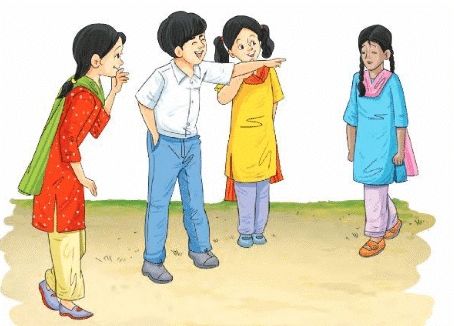
How to Play:
Groups of 7–8 students are formed.
Scenarios are shared (e.g., uncomfortable comments, poking, peer pressure).
Students perform skits with roles like victim, offender, and observer.
Students discuss their experiences and feelings after the skit.
What Students Learn:
What harassment is and how it affects people
Difference between good touch and bad touch
How to respond safely and report incidents
Respecting personal boundaries
Takeaway:
The skit helps students develop confidence and awareness about personal safety and respectful behavior.
Summary
This chapter helps students understand that physical education is not just about games—it’s about:
Building strength, courage, and fitness
Learning teamwork and coordination
Respecting others and creating a safe space
Understanding emotional and mental challenges
Standing against bullying and harassment
Each activity teaches important life lessons that help students become stronger, kinder, and more aware individuals—both inside and outside the classroom.
FAQs on Class 7 Notes Physical Education Unit 1 Foundational Basis of Physical Education and Well-being Free PDF
| 1. What are the main objectives of the Ball Progression Game? |  |
| 2. How does the Ghorpadiche Shepoot game promote physical fitness? |  |
| 3. What are the key themes addressed in the Stand Up, Speak Out role-play concerning bullying? |  |
| 4. How can the Harassment Prevention Skit be effective in educating students? |  |
| 5. What is the significance of incorporating games like Nalugu Rallu Ata in physical education? |  |





















